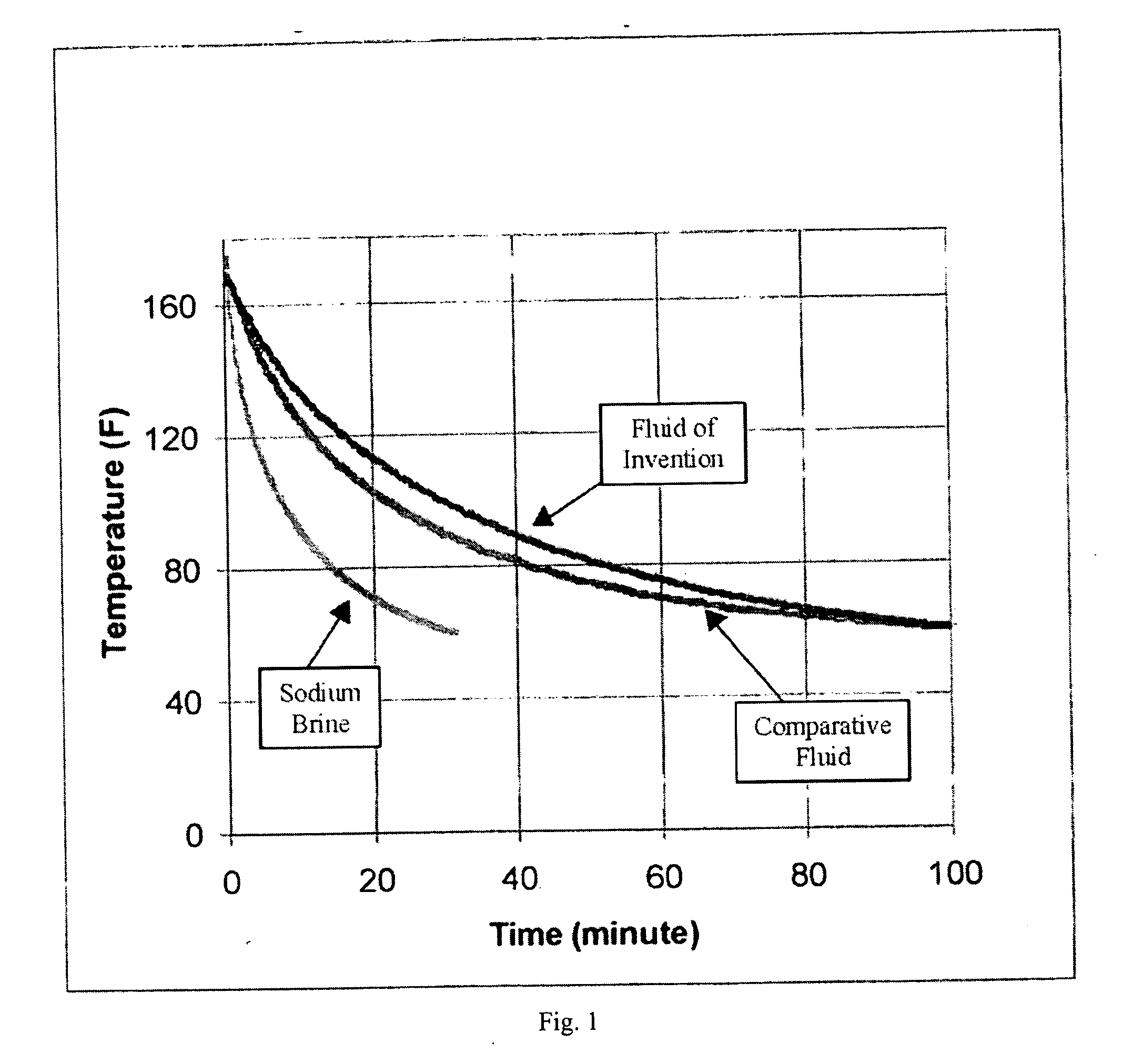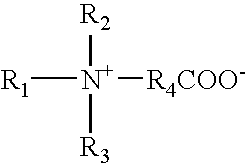Methods and compositions for thermal insulation
- Summary
- Abstract
- Description
- Claims
- Application Information
AI Technical Summary
Benefits of technology
Problems solved by technology
Method used
Image
Examples
example
[0044] A thermal insulating fluid (Fluid A) was prepared by admixing approximately 8.5% by volume of oleylamidopropyl betaine surfactant, commercially available as Rewoteric AM TEG from Degussa), 2.2% by volume of propylene glycol, and approximately 89% by volume CaBr2 brine (14.2 lb / gal).
[0045] To demonstrate the effectiveness of the fluid, the thermal insulation properties of the fluid systems were evaluated in a laboratory sized heat transfer apparatus which consisted of three concentric aluminum tubes connected and scaled by two flanges, as set forth in Paul Javora, et al. “Water-Based Insulating Fluids for Deep-Water Riser Applications,” SPE 88547, presented at the SPE Asia Pacific Oil and Gas Conference and Exhibition in Perth, Australia, 18-20 Oct. 2004. The conditions simulated the fluid's dynamic behavior under thermal stress in a simulated wellbore. The results are present in Table 1, wherein higher heat transfer coefficient and higher effective thermal conductivity trans...
PUM
 Login to View More
Login to View More Abstract
Description
Claims
Application Information
 Login to View More
Login to View More - R&D
- Intellectual Property
- Life Sciences
- Materials
- Tech Scout
- Unparalleled Data Quality
- Higher Quality Content
- 60% Fewer Hallucinations
Browse by: Latest US Patents, China's latest patents, Technical Efficacy Thesaurus, Application Domain, Technology Topic, Popular Technical Reports.
© 2025 PatSnap. All rights reserved.Legal|Privacy policy|Modern Slavery Act Transparency Statement|Sitemap|About US| Contact US: help@patsnap.com



